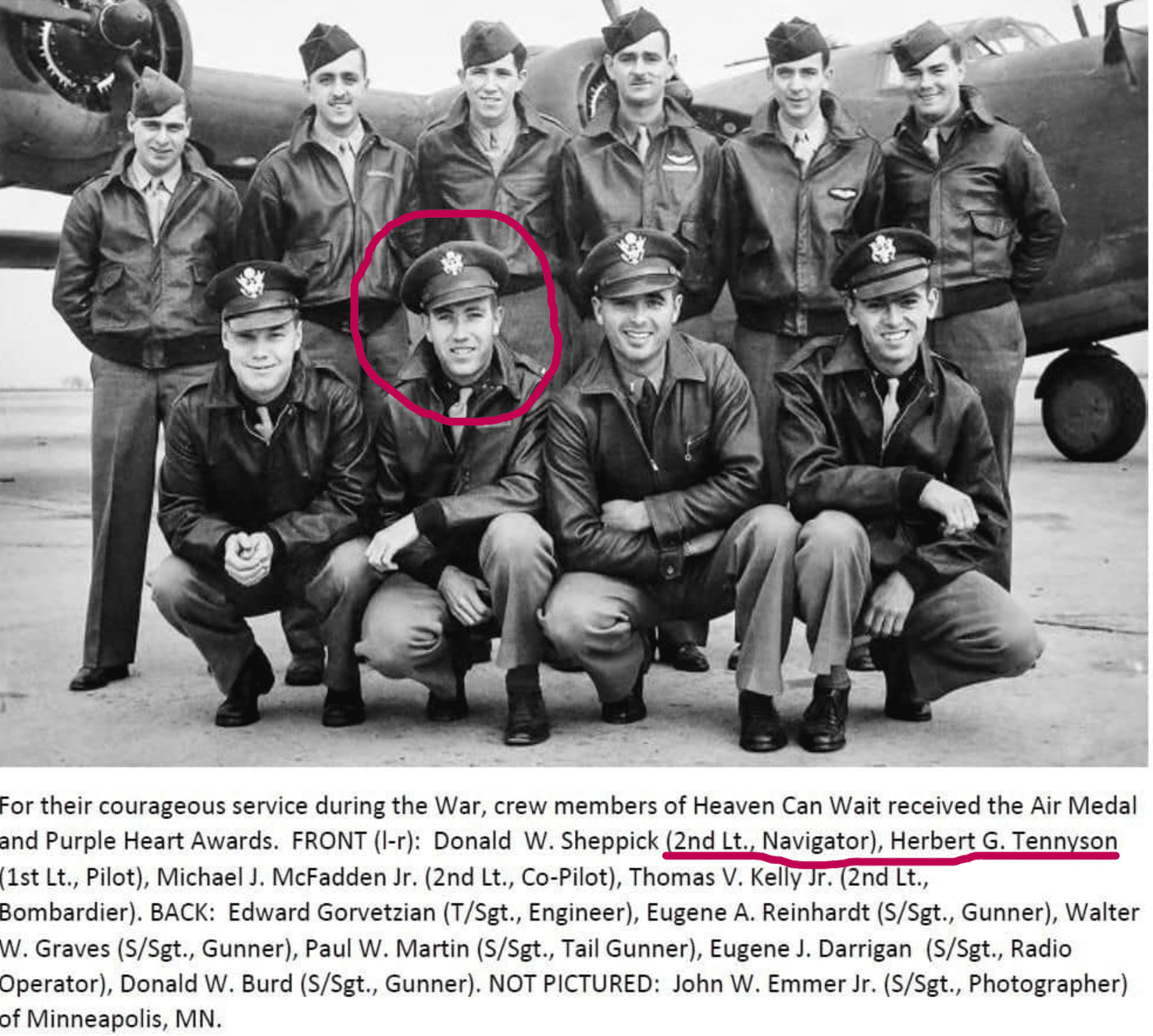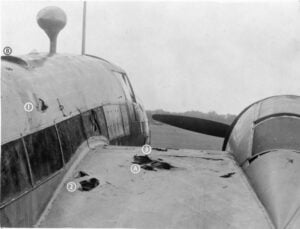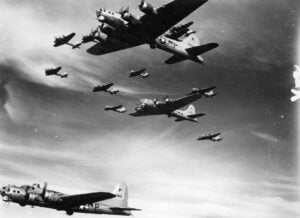After 80 Years, A WWII Pilot Is Identified Following A Deadly Mission

Jo Keller / Facebook
A Forgotten Pilot’s Story Resurfaces
For nearly 80 years, the fate of a WWII pilot and his crew remained a mystery. The tragic mission ended in disaster, leaving families without answers. Recently, that mystery was solved when the remains of First Lieutenant Herbert G. Tennyson were positively identified, bringing long-awaited closure to his loved ones.
The Deadly Mission of “Heaven Can Wait”
On March 11, 1944, Tennyson was flying a B-24 bomber named “Heaven Can Wait” during a mission over the Pacific. The bomber was struck by anti-aircraft fire while approaching its target near Papua New Guinea. With bombs still on board, the aircraft exploded upon impact, resulting in the deaths of all 11 crew members. For decades, their remains were never recovered, leaving their families without closure.
In 2017, an organization called Project Recover located the wreckage. Using sonar scanning and underwater exploration, they identified the twisted remains of the B-24 resting at the bottom of Hansa Bay. This discovery marked the beginning of a detailed effort to identify the crew members.

Identifying the Remains
The recovery process was complex. Teams carefully gathered skeletal remains and other evidence from the wreck site. Dental records played a key role in identifying Tennyson, as teeth can endure harsh conditions for many years. Anthropologists also examined the bones, assessing height, age, and physical traits to narrow down potential matches.
DNA testing was a crucial step. Extracting usable DNA from remains submerged in saltwater for so long presented a challenge, but advancements in genetic analysis allowed experts to confirm Tennyson’s identity. By matching DNA with surviving relatives, investigators were able to provide clear proof of his identity.

The Efforts to Locate Missing Soldiers
The Defense POW/MIA Accounting Agency (DPAA) continues to search for over 81,000 Americans still missing from past conflicts. Each identification effort is a slow and detailed process, combining science, records research, and family outreach. The discovery of Tennyson’s remains is one of many cases that demonstrates the ongoing commitment to locating those lost during wartime.

Remembering Tennyson and His Crew
The identification of Tennyson was more than just a scientific achievement. For his family, it provided long-awaited answers. Tennyson’s sacrifice was finally recognized, ensuring that his story would not be forgotten. His remains were returned home, where he received full military honors in a ceremony that brought together relatives, veterans, and those who worked tirelessly to uncover his story.
While the story of “Heaven Can Wait” is now complete, many families are still waiting for news about their missing loved ones. The efforts of dedicated researchers and scientists continue to offer hope that more answers will come to light.



















